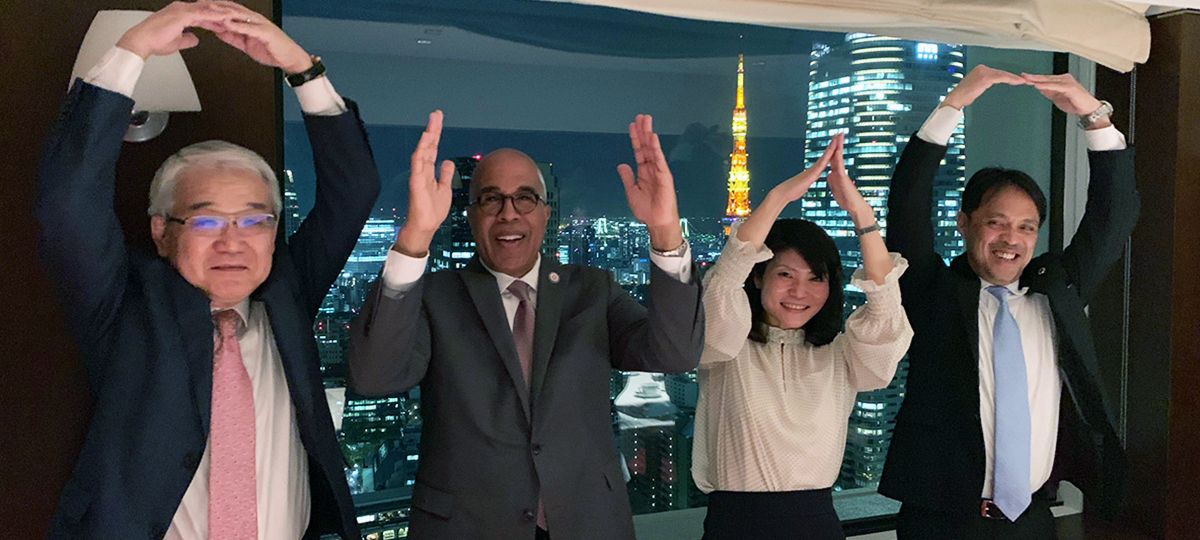
University of Tsukuba Disability Sciences Program & The Ohio State University College of Education & Human Ecology International Mini-Conference
March 8th; 6:30 pm to 9:30 pm EST;
March 9th; 8:30 am to 11:30 am JST
Virtual Conference via Zoom
This International Virtual Mini-Conference focuses on two main themes: Inclusive Education and Literacy and d/Deaf and Hard of Hearing Students. For the first theme, presenters will discuss the merits of inclusive education for three broad cohorts of students—those who are d/Deaf and hard of hearing, those with cognitive disabilities, and those who are blind or with visual impairments. For the second theme, the focus is on d/Deaf and hard of hearing students with information pertaining to visual phonics, cue sign, cochlear implants, and the use of signed or spoken language and their effects on the development of literacy. The conference will provide up-to-date research findings, and educational and instructional implications.
Schedule
Theme I: Inclusive Education
Moderator/Introductions: Peter V. Paul / Noelle Arnold—2 minutes
Opening remarks and introduction of each speaker and topic.
Inclusive Education & d/Deaf and Hard of Hearing Students
- Julia Silvestri (Yale University) & Maria Hartman (Teachers College/Columbia University)
- Aya Oshika (Tokyo Gakugei University)
Inclusive Education for students with cognitive disabilities
- Matthew Brock (Ohio State University)
- Hiroki Yoneda (University of Tsukuba)
Inclusive Education for students who are blind or with visual impairments
- Hisae Miyauchi (University of Tsukuba)
- Tiffany Wild (Ohio State University)
Discussion, questions from audience, and concluding remarks
Peter V. Paul / Noelle Arnold: 20 minutes
Break
Break: 5 minutes
Theme II: Literacy and d/Deaf and Hard of Hearing Students
Moderator/Introductions: Peter V. Paul / Noelle Arnold: —2 minutes
Opening remarks and introduction of each speaker and topic.
- Visual Phonics and Cue Sign and Relation to Language/Literacy [20 minutes]
- Visual Phonics:
- Beverly Trezek (University of Wisconsin)
- Cue Sign:
- Tsuneo Harashima (University of Tsukuba)
- Visual Phonics:
- Cochlear Implants and the Development of Language/Literacy [20 minutes]
- Connie Mayer (York University)
- Hirohito Chonan (Tsukuba University of Technology)
- Sign, Speech, and the Development of Literacy [20 minutes]
- Sign Language, Spoken Language, and the Development of English Literacy
- Elaine Smolen (Teachers College/Columbia University)
- Japanese Sign Language, Signed Japanese, and Japanese Literacy
- Wataru Takei (Kanazawa University)
- Sign Language, Spoken Language, and the Development of English Literacy
Discussion, questions from audience, and concluding remarks
Peter V. Paul / Noelle Arnold: 20 minutes
Leadership
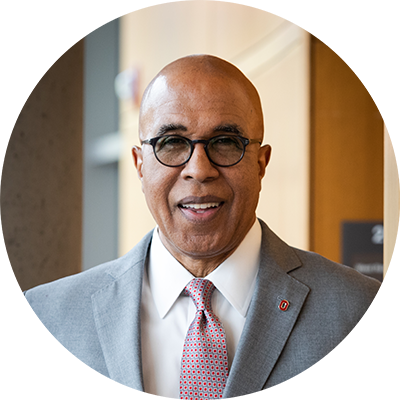
Dean Don Pope-Davis
The College of Education and Human Ecology
The Ohio State University
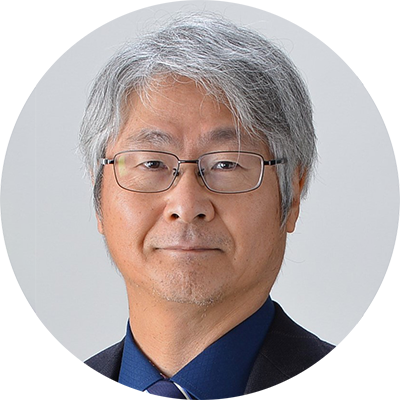
Dean Yoshiyasu Ida
Department of Human Sciences
University of Tsukuba
Moderators
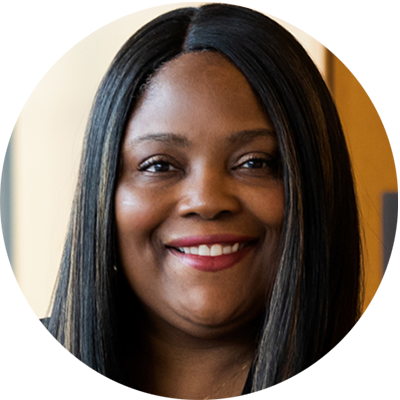
Noelle Arnold, PhD
Professor, Department of Educational Studies
Senior Associate Dean, Office of Diversity, Inclusion, and Outreach
College of Education and Human Ecology
The Ohio State University
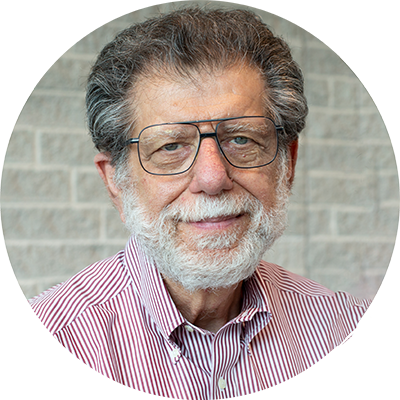
Peter V. Paul, PhD
Professor, Department of Educational Studies
Program Chair, Department of Educational Studies
College of Education and Human Ecology
The Ohio State University
Theme One: Inclusive Education
Inclusive education & d/Deaf and Hard of Hearing Students
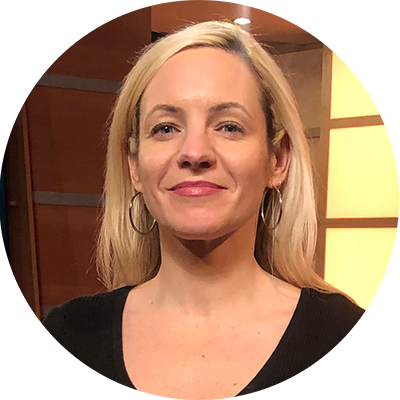
Julie Silvestri
Yale UniversityBrief Bio
Brief Bio
Julia Silvestri is a Lector of American Sign Language and the coordinator of the ASL program at Yale University. She is also an Adjunct Assistant Professor for the Program in the Education of the Deaf & Hard of Hearing at Columbia University, where she completed her PhD in Physical Disabilities: Deaf and Hard of Hearing. She holds an EdS in Educational Leadership and Administration from George Washington University, and an M.Ed in Deaf Education from Smith College. She has a background as a K-12 educator and administrator in a range of schools for the deaf and public school programs in New York, Connecticut, and Massachusetts. She recently completed a study on translanguaging in Deaf, DeafBlind, and DeafDisabled students, and is currently working on a study about project-based learning in ASL education.
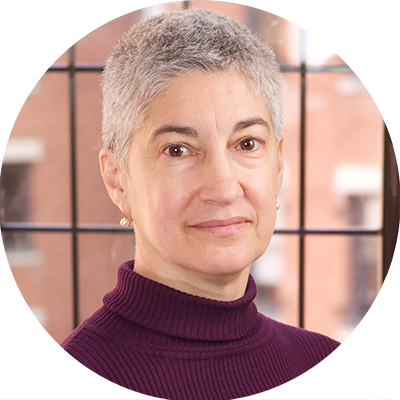
Maria C. Hartman, PhD
Director of the Program for the Education of the Deaf and Hard of Hearing
Teachers College
Columbia UniversityBrief Bio
Brief Bio
Maria Hartman, PhD, is the Director of the Program for the Education of the Deaf and Hard of Hearing at Teachers College, Columbia University, where she teaches graduate level courses in language and literacy development as well as courses in assessment and teaching methods. Dr Hartman also supervises pre-service teachers in schools, clinics and agencies that serve deaf and hard of hearing children throughout the New York City area. At Teachers College, her research and publications focus on language and literacy development. She is currently involved in a longitudinal study of reading development in deaf children who use listening and spoken language at a large school for the deaf in the Southwest.
Presentation
The movement towards inclusive public education for deaf and hard of hearing children (DHH) has steadily gathered momentum during the last fifty years. Both within the United States and abroad, inclusive public education has been facilitated through legislative action with varied results. Varied interpretation of inclusion policy, notably the “Least Restrictive Environment” (LRE) clause of the Individuals with Disabilities Education Act in the United States, an emphasis on assimilation, and a default preference for auditory-oral communication have often resulted in isolating and inaccessible experiences for DHH students in the mainstream. The purpose of this article is to review theory and research on effective practices in inclusion for DHH students. The research is summarized with respect to accessibility, social-emotional considerations, and language policy. It is often asserted that communication access and cultural identity are major factors that impact the successful inclusion of these students with bicultural identity related to greater wellbeing. Deaf schools may be the LRE placement option for some students and source of resource and support for DHH students and educators in all settings. The authors suggest that a shift towards a more inclusive experience in mainstream settings is emerging through the use of Universal Design for Learning (UDL), classroom technology, and culturally responsive education that integrates sign language and Deaf culture to foster bicultural identities. Strategies for effective inclusion include co-enrollment, deaf awareness programming, and consistent policy that equalizes the status of sign languages. Future research is recommended in effective practices in auditory and visual accommodations, integration of technology in K-12 classrooms, and the relation of policy to practice in inclusive education for DHH students.
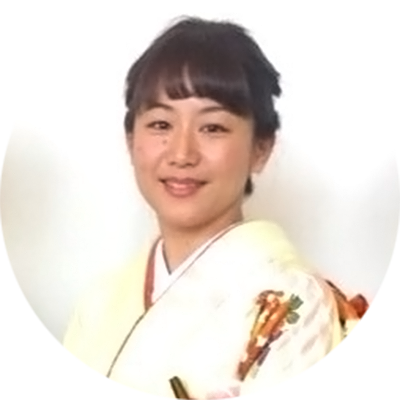
Aya Oshika, Ph.D.
Faculty of Special Needs Education
Tokyo Gakugei University
Brief Bio
Dr. Aya Oshika obtained her Ph.D. in 2010. She has been teaching in the Department of Special Education, Tokyo Gakugei University since 2020. Her research interests include education for Deaf or hard-of-hearing children, especially combined with LD, ADHD, and ASD, who do not have obvious mental retardation but need careful understanding and support in their education. In a previous study, a survey of schools for the Deaf throughout Japan showed that 33.7% of children and students showed significant developmental disabilities as a result of teacher checklists. She also provides ongoing support for them and examines effective ways to help them. Her recent publications include “Survey on Hearing Impaired Children with Developmental Disabilities in School for the Deaf since the Introduction of the Special Needs Education System: Trends in the Nationwide Surveys over the Past 10 Years”(in Hearing & Language Disorders,2019),” Toward the Establishment of a Long-Term Support System for Hearing-Impaired Children with Developmental Disabilities -Interviews with the children and their parents after junior high school age”(in The Japanese Association of Special Education 58th Conference, 2020).
Presentation
In Japan, small-group and highly specialized education has been traditionally provided in schools for the Deaf. Although the superiority of aural or sign language methods has been discussed in the past, communication methods are now being selected according to the actual conditions of the children and the purpose of the instruction, rather than methodologies. On the other hand, the number of hearing-impaired children enrolled in regular schools is increasing due to the increase in cochlear implant children and the spread of inclusive education. It is necessary to organize an educational system that allows each individual to have a wide range of choices in educational support according to his or her goals and actual conditions, while at the same time providing high-quality support wherever they may be. As a result, the education of hearing-impaired children in Japan, as in other countries, faces the challenge of having to meet a wide variety of needs. I would like to discuss the specialty of schools for the Deaf as special schools and how inclusive education for children with hearing impairment should be in the future.
Inclusive education for students with cognitive disabilities
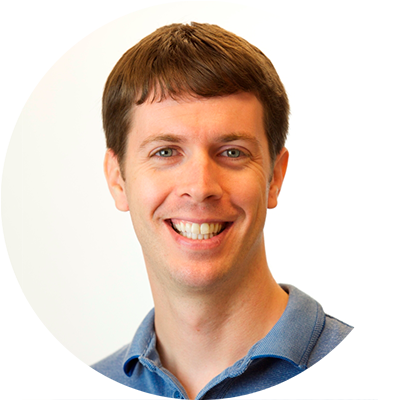
Mathew Brock
Associate Professor
Department of Educational Studies
College of Education and Human Ecology
The Ohio State University
Brief Bio
Dr. Matt Brock is an Associate Professor of Special Education at Ohio State University. He has two lines of research that both focus on students with significant disabilities who have diagnoses of intellectual disability, autism, or multiple disabilities. Specifically, he is interested in inclusion and peer-mediated intervention, and preparing teachers and paraeducators to implement evidence-based practices. He currently is leading a large-scale efficacy study of FLIP Recess, a peer-mediated intervention to improve play skills and social outcomes at recess for elementary students with significant disabilities. Prior to receiving his doctorate, Dr. Brock worked as a preschool teacher, elementary school teacher, and taught through the U.S. Peace Corps. He has published more than 60 peer-reviewed journal articles and book chapters, and he has been awarded over $6 million in federal grants. In 2021, Dr. Brock was named in Stanford University’s list of the Top 2% of Scientists Worldwide, and he received the Research Award from the Council for Exceptional Children Division on Autism and Developmental Disabilities.
Presentation
Presentation Title: What Does Recess Look Like for Students with Significant Disabilities?
Presentation Abstract: If you ask an elementary school-aged child to identify their favorite time of the school day, chances are their answer will be recess. Not only is recess a popular time, but it also represents a natural opportunity to develop social competence and build social connections. However, the experiences of students with significant disabilities at recess have not been well studied. We conducted 45 observations of social and play behavior of 15 elementary students with significant disabilities at recess, and constructed social networks based on student interviews. We compared these data to normative data from typically developing peers. We found large and statistically significant differences between the play and social behavior of students with and without significant disabilities, and we also found considerable within group variability. These data provide a much more complete picture of recess for students with significant disabilities than previously reported in the research literature.
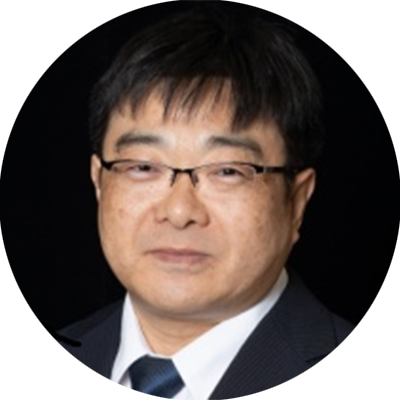
Hiroki Yoneda, Ph.D.
Faculty of Human Sciences
University of Tsukuba
Brief Bio
Dr. Yoneda obtained his Ph.D. in 2014 and is currently an Associate Professor in the Faculty of Human Sciences at the University of Tsukuba. He started his research career in April 1997 as an Assistant Professor in Education for Children with Disabilities in the Teachers College of Education at Ibaraki University, a national university. His research interests include curriculum for students with special educational needs, especially, education for students with Intellectual and Developmental Disabilities. He is currently conducting research project on “Development of Models of Support for students with Intensive Educational Needs in Inclusive Education Systems”, JSPS/Grant-in-Aid for Scientific Research (B). He is also Chief Editor of Japanese Journal of Special Education. His recent publications include “Realization of an Inclusive Education Curriculum through Methodological Fusion of Education for Students with Intellectual Disabilities and Regular Education”(in Japanese Journal of Special Needs Education Practice Research,2022), and “Development of the Japanese Inclusive Education System: From Special Schools to Curriculum Modification for Special-Needs Education in Regular Schools”(PSSHERS, 2020).
Presentation
I would like to present the outline of “Japanese special needs education” and to discuss some problem which should be conquered, for realizing inclusive education. Especially, I hope that I can share the problems of placements and curriculum modifications for students with intellectual and developmental disabilities (in other words, students with sever cognitive disabilities). Japanese Special Needs Education provides triple track-shaped curricula for course with regular school subjects; course with subjects for students with intellectual and development disabilities; and course mainly taught with “Jiritsu-katudo,” which is a containing activity to promote disabled students’ independence based on the degree of the learning difficulty of each student. Japanese Common curriculum flamework to secure continuity among these 3 curriculum track types is necessary.
Inclusive education for students who are blind or with visual impairments
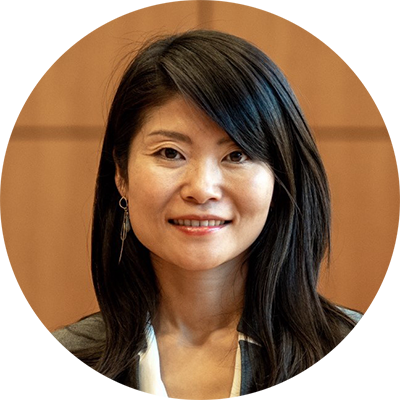
Hisae Miyauchi, Ph.D.
Faculty of Human Sciences
University of Tsukuba
Brief Bio
Dr. Hisae Miyauchi obtained her Ph.D. in 2013 and currently is an Associate Professor at University of Tsukuba, Faculty of Human Sciences. Her research interests include education for visual impairment and inclusive education. She explores ways to increase inclusion and diversity through collaborative research with colleagues in the US and Europe. Her publications in collaboration with OSU scholars include “Perceptions of Students with Visual Impairment on Inclusive Education: A Narrative Meta-analysis” (in Human Research in Rehabilitation, 2020) and “Keeping Schools for the Blind Vital in an Era of Inclusion: Key Elements for Success” (in Journal of Visual Impairment & Blindness, 2022). Her most recent publication is “Role of Japanese schools for the blind in the era of inclusion” (in British Journal of Visual Impairment, 2022) which will be shared in the presentation.
Presentation
Inclusiveness and the harmonious aspects of Japan have fascinated national and international scholars. Today, expanding “inclusive education” –which embraces having all children including those with disabilities learn in local schools– is a global agenda. Although the right of all children to learn in an inclusive setting is recognized in Japan, the number of children with severe sensory impairment learning in separate or non-inclusive settings is much higher than in either the US or the UK. The presentation will touch on some of the issues pertaining to the inclusion of children with visual impairment in Japan. Potential ways to overcome these challenges and how special schools for the blind–a place, which was once criticized in the full inclusion movement, may play an important role in supporting inclusion will be discussed.
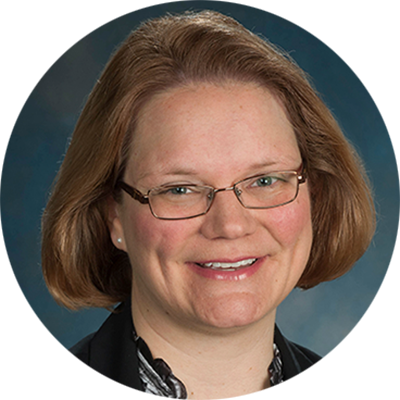
Tiffany Wild, PhD
Associate Professor, Department of Teaching and Learning
Assistant Chair, Department of Teaching and Learning
College of Education and Human Ecology
The Ohio State University
Brief Bio
Dr. Tiffany Wild began her education career as a middle school science and math teacher. Her interest in visual impairment began when students with visual impairments were placed in her classroom without any support. Those students inspired Dr. Wild to become a Teacher of Students with Visual Impairments (TSVI). Dr. Wild was awarded a prestigious doctoral fellowship with the National Center for Leadership in Visual Impairments to pursue her doctoral degree and her dissertation was awarded the “Dissertation of the Year” by the Council for Exceptional Children’s Division on Visual impairment. Currently Dr. Wild is an associate professor in the Department of Teaching and Learning in the College of Education and Human Ecology. Dr. Wild’s research focuses on science education for students with visual impairments. Dr. Wild has published and presented both nationally and internationally. It is through her research endeavors that she has been asked to collaborate on numerous research projects and to present at national, state, and local conventions. She was awarded the Warren C. Bledsoe award by the Association for Education of the Blind and Visually Impaired for noteworthy literature in the field of visual impairment and blindness.
Presentation
Science literacy is vital in order to foster the curiosity and learning of the world around us. However, students with visual impairments often do not have the same opportunities as their sighted peers to engage in science literacy activities and instruction. This presentation will focus on what we know about science literacy for students with visual impairments, how to foster the scientific literacy skills of students with visual impairments, and the advocacy needed in order to ensure that persons with visual impairment are scientifically literate in the classroom and beyond.
Theme Two: Literacy and d/Deaf and Hard of Hearing Students
Visual Phonics and Cue Sign and Relation to Language/Literacy
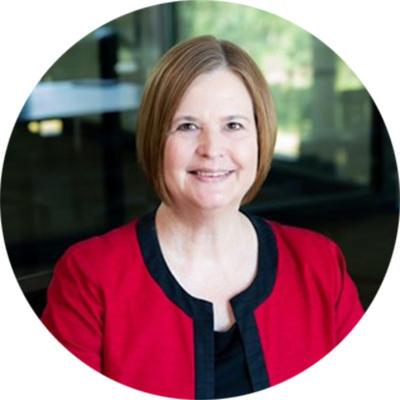
Dr. Beverly J. Trezek
Associate Professor
Tashia F. Morgridge Distinguished Chair in Reading in the Department of Rehabilitation Psychology and Special Education
University of Wisconsin-Madison
Brief Bio
Dr. Beverly J. Trezek is an Associate Professor and the Tashia F. Morgridge Distinguished Chair in Reading in the Department of Rehabilitation Psychology and Special Education at the University of Wisconsin-Madison. Her research focuses on reading instruction for beginning and struggling readers, with a particular emphasis on investigating the role that phonemic awareness and phonics play in the development of literacy skills for students who are deaf or hard of hearing. Dr. Trezek has published numerous articles related to literacy and deafness and is the co-author of two books on this topic, Reading and Deafness: Theory, Research, and Practice (Trezek, Wang, & Paul, 2010) and Early Literacy Development in Deaf Children (Mayer & Trezek, 2015).
Presentation
Visual Phonics: Affordances, Constraints, and Renewed Opportunities
See-the-Sound Visual Phonics, more commonly known as Visual Phonics, is a multisensory instructional tool designed to represent individual phonemes of the language and provide visual and kinesthetic information about phoneme production. Given the nature of the Visual Phonics system, which represents phonological information at the sublexical and lexical levels, this instructional tool is most effective for developing skills that require students to manipulate individual phonemes and/or short strings of phonemes within words. As such, the research exploring the efficacy of Visual Phonics in the field of deafness has focused primarily on using this tool to supplement phonological-based reading instruction, frequently with students who use signed language as their primary mode of communication. In this presentation, the findings of research investigations conducted by multiple research teams over a 10-year period (2005-2015) will be used as the basis for discussing the affordances and constraints of the Visual Phonics system and for exploring renewed opportunities to implement this instructional tool in the current context of the field, in which most deaf students are making effective use of hearing technologies and use spoken language as their primary mode of communication.
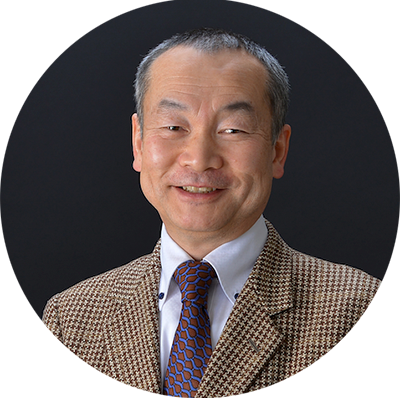
Tsuneo Harashima, PhD
University of Tsukuba
Faculty of Human Sciences
Brief Bio
Dr. Tsuneo HARASHIMA obtained his Ph.D. in 1991 and is currently a Professor at the University of Tsukuba, Faculty of Human Sciences. His research interests include auditory processing of hearing impairment and inclusive education for the person with hearing impairment.
He was the editor of the first book published in Japan on auditory information processing disorders and the author of the following publications. Harashima, T.: ‘Chap.3 Gap Detection Test. PP.35-39’, ‘Chap.4 Word recognition test under noise. PP.39-41’ In “Auditory processing test manual,” Kaga, K., Obuchi, C., Harashima, T. (Eds.) Gakuensha, 2021. (in Japanese) Harashima, T.: ‘Chap.1 What is APD?, PP.10-21’, ‘Chap.4 Physiological test, PP.66-72’ In “I don’t understand What I’m listening, Understanding of auditory processing disorder,” Obuchi, C., Harashima, T. (Eds.) Gakuensha, 2016. (in Japanese)
After six years of experience as a principal of a school for the deaf, he began to focus on Japanese Cue Sign, a visual aid for lip-reading, in the language development of children with hearing impairment and launched the first Japanese Cue Sign Association in 2016 with Chonan, H. and Wakinaka, K., and is working to promote awareness among teachers in this field through the association.
Presentation
In 2016, Chonan, Wakinaka, and I reaffirmed the importance of cue signs in deaf education and launched the Cue Sign Research Association. Wakinaka, in particular, is a person who learned Japanese from an early age through cue signs, and she has made significant contributions to the content of this presentation, especially the creation of the cue sign video and website.
In Japan, “cue signs for pronunciation instruction” were used in many schools for deaf students before World War II; however, their use was limited to pronunciation instructions.
After World War II, the Kyoto Prefectural School for the Deaf began using their “cue sign for pronunciation instruction” in Japanese language instruction, and the results were so successful that they spread nationwide. The cue signs, which are used in Japanese language instruction and daily communication, are now called “cue signs” to distinguish them from the “cue signs for pronunciation instruction,” which were used only in pronunciation instruction. Since each school began using cue signs and developed them for their own internal use, respectively, they vary from school to school.
In recent years, as sign language and the finger alphabet are becoming more widespread in Japanese schools for the deaf, the number of schools for the deaf that uses cue signs has been decreasing. However, there is a movement to reconsider the effectiveness of the cue signs, and we have developed a cue sign that can be used widely in Japan.
We would like to introduce a “Japanese cue sign” (trial version) that is easy to use for infants and toddlers with immature finger coordination skills and also for their parents to master. We expect to find various improvements in this “Japanese cue sign” through actual trial use, and we will continue to modify it in the future without changing the basic policy.
Cochlear Implants and the Development of Language/Literacy

Connie Mayer, EdD, OCT
Professor
York University
Faculty of Education
Brief Bio
Dr. Mayer is a Professor in the Faculty of Education at York University and Academic
Coordinator of the Teacher Preparation Program in the Education of Deaf and Hard of Hearing (DHH) students. She also holds an Honorary Professorship in the Division of Human Communication, Development and Hearing at the University of Manchester in the UK. She is a member of the Editorial Board for the Journal of Deaf Studies and Deaf Education, the American Annals of the Deaf and the Reading Research Quarterly, and on the Advisory Council of the Central Institute for the Deaf. Her research focuses on language and literacy development in deaf learners, cochlear implantation, communication approaches and bilingualism, and models of teacher education. In 2016 she was awarded the Sister Mary Delaney Lifetime Achievement Award in recognition of her teaching, research, and service in the preparation of teachers of deaf students by the American College Educators of the Deaf and Hard of Hearing. Current projects include investigations of Theory of Mind in the written language of deaf learners, research updating the evidence base on the literacy outcomes of deaf students, and a global survey investigating the long-term needs of adult CI users.
Presentation
Cochlear Implants: From Language to Literacy
Even with early identification, most children with severe-profound hearing loss would still have major difficulty accessing spoken language if they had to rely only on hearing aids. What has made the crucial difference in achievement for this cohort is the combination of early detection via newborn screening and the advent of cochlear implantation—a technology that provides the best hearing levels currently possible. These two interacting factors are resulting in language and literacy outcomes that far exceed those of the past.
There is already a considerable body of research evidence indicating that significant numbers of children with cochlear implants (CIs) are developing expressive and receptive language at, or closer to age-appropriate levels. Given the well-documented connection between oral language development and learning to read and write in typically hearing children, it has been suggested that this interdependent relationship between language and literacy should also hold true for deaf students. Therefore, when learners with CIs evidence improved oral language, it should follow that this will have a concomitant positive impact on literacy development, raising expectations that cochlear implantation will improve reading and writing outcomes, and academic achievement for these learners in unprecedented ways.
In this presentation we will: 1) review the available empirical evidence on the literacy achievement of students with CIs, 2) consider the extent to which outcomes approach that of typically hearing age peers, and 3) identify demographic factors influencing performance (i.e., age of implantation, number of implants, home language, additional disability etc.). As growing numbers of deaf children receive CIs, often bilaterally and before 12 months of age, studies of literacy development in this group are essential to establish the evidence base necessary for informing educational policy and pedagogical practice—and to ensure that this technology is providing the enhanced opportunities for literacy learning that have been predicted.
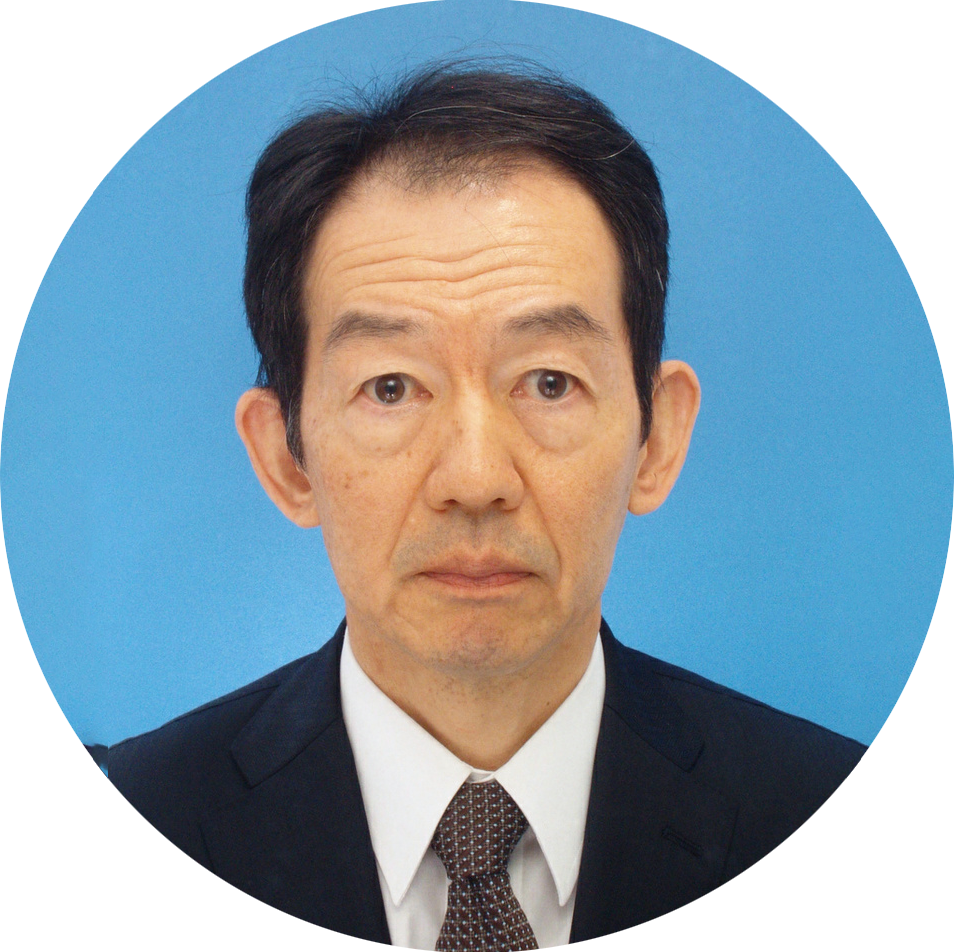
Hirohito Chonan, PhD
Tsukuba University of Technology
Research and Support Center on Higher Education for People with Disabilities
Brief Bio
Dr. Hirohito Chonan obtained his Ph.D. in 2001. After working for 12 years at a school for the deaf, he became a researcher and is currently a Professor at Tsukuba University of Technology in the Research and Support Center on Higher Education for People with Disabilities.
His main field of research is language and cognitive development in children with impaired hearing. In recent years, his specific focus has been on the relationship of phonological awareness development and reading and writing development to working memory, with special interest in the discrepancies between children with cochlear implants and children who use hearing aids in the processing of phoneme analysis tasks. Recent works are “Instructional Methods for Children with Hearing Impairment, Viewed from the Development of Language, Thought, and Sensibility—Cultivation of Sure Thought in Rich Language, and Feelings with a Warm Heart] (2022, in Japanese), and “A Study of the Relationship between Phonological Loop, Executive Function, and the Development of Phonological Awareness in Hearing-Impaired Children.” The Japanese Journal of Communication Disorders, 38 (2), 105-112, 2021.
Presentation
Cochlear implants improve the hearing of children with impaired hearing and raise the intelligibility of their speech, but research results on reading and writing abilities are still inconsistent, both in Japan and other countries. This presentation will report the current state of language and reading and writing development in children with cochlear implants in Japan, with the purpose of providing information to deepen the discussion on the relationship with cochlear implants, especially for reading. The speech perception ability and speech intelligibility of children with cochlear implants in Japan are generally high. For phonological awareness, it is reported that children with cochlear implants generally show similar development to normal-hearing children. Although vocabulary development is shown to be better than in children who use hearing aids, results are inconsistent regarding the age at which surgery is most effective. Grammar ability lags behind that of normal-hearing children, but it is reported that syntax acquisition is facilitated when using hand techniques. Reading and writing abilities are higher with improvements in hearing ability from the early discovery phase, and early hearing aid use or cochlear implants. However, individual differences are also large. In the present stage, discussion about the control of factors that affect reading and how to plan research are important issues. Particularly with respect to related factors, psychological and social factors such as differences in cognitive abilities, empathy, educational history, family environment, and the main means of communication of children with impaired hearing need to be considered, in addition to factors such as age at surgery and timing of the start of hearing aid use. Realistically, however, ideal control of factors is difficult, and the current situation will be presented, in which the need for quasi-experimental studies is also being discussed.
Sign, Speech, and the Development of Literacy
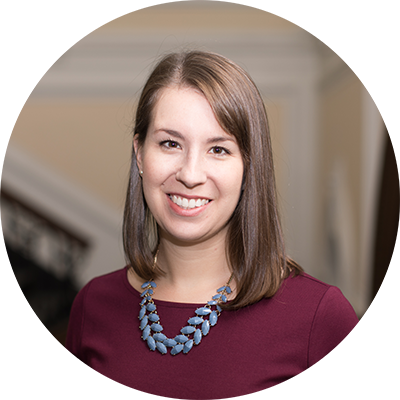
Elaine R. Smolen, PhD, CED, LSLS Cert. AVEd
Visiting Assistant Professor
Teachers College, Columbia University
Brief Bio
Elaine Smolen is a Visiting Assistant Professor in the Deaf and Hard of Hearing Education program at Teachers College, Columbia University. Smolen received her PhD in deaf and hard of hearing education from Columbia University as a National Leadership Consortium in Sensory Disabilities scholar. She completed postdoctoral work at The Ohio State University, where she studied joint engagement and vocabulary learning in interactions between parents and their toddlers with cochlear implants. Her research centers around language and literacy development for young deaf and hard of hearing children who use listening and spoken language. Current projects include longitudinal investigations of language environments and reading achievement, as well as research into parent-infant interactions using head-mounted eye-trackers. An experienced teacher of the deaf and certified Listening and Spoken Language Specialist, Smolen has served young children and their families as a head classroom teacher and in an itinerant role. She holds teaching certification in the areas of deaf education, elementary education, and English.
Presentation
Presentation Title: Sign Language, Spoken Language, and the Development of English Literacy
Presentation Abstract: Literacy development for deaf and hard of hearing (DHH) children has long been an area of concern for educators, parents, and researchers. While the historical finding that the average deaf student leaves high school with a fourth-grade reading level is often cited (Traxler, 2000), this statistic belies significant individual differences in literacy achievement within the diverse population of DHH students. An important factor in these individual differences is language comprehension, which, along with word recognition, forms the basis for the Simple View of Reading’s theory of reading comprehension (Gough & Tunmer, 1986). While language comprehension is critical for hearing readers, it may be even more important for beginning DHH readers, who often experience delays in accessing visual and/or spoken language. Several studies have found a relation between sign language proficiency and English literacy skills, suggesting that intervening early to support families in creating a sign-rich environment is crucial for those who desire a visual language outcome (Scott, 2022). Evidence from research in the science of reading, which emphasizes the role of phonological processing in skilled reading, suggests that this early language intervention might facilitate literacy development for the new majority of DHH children who have auditory access to spoken phonology through hearing technology. Recent research has found age-appropriate reading achievement for samples of DHH children enrolled in specialized listening and spoken language programs using standardized reading assessments (Mayer et al., 2021; Smolen et al., 2020). Although basic reading skills in this population are strong, reading fluency appears to be an area of relative weakness, suggesting that intervention should focus on fluency beginning in the pre-literacy period.
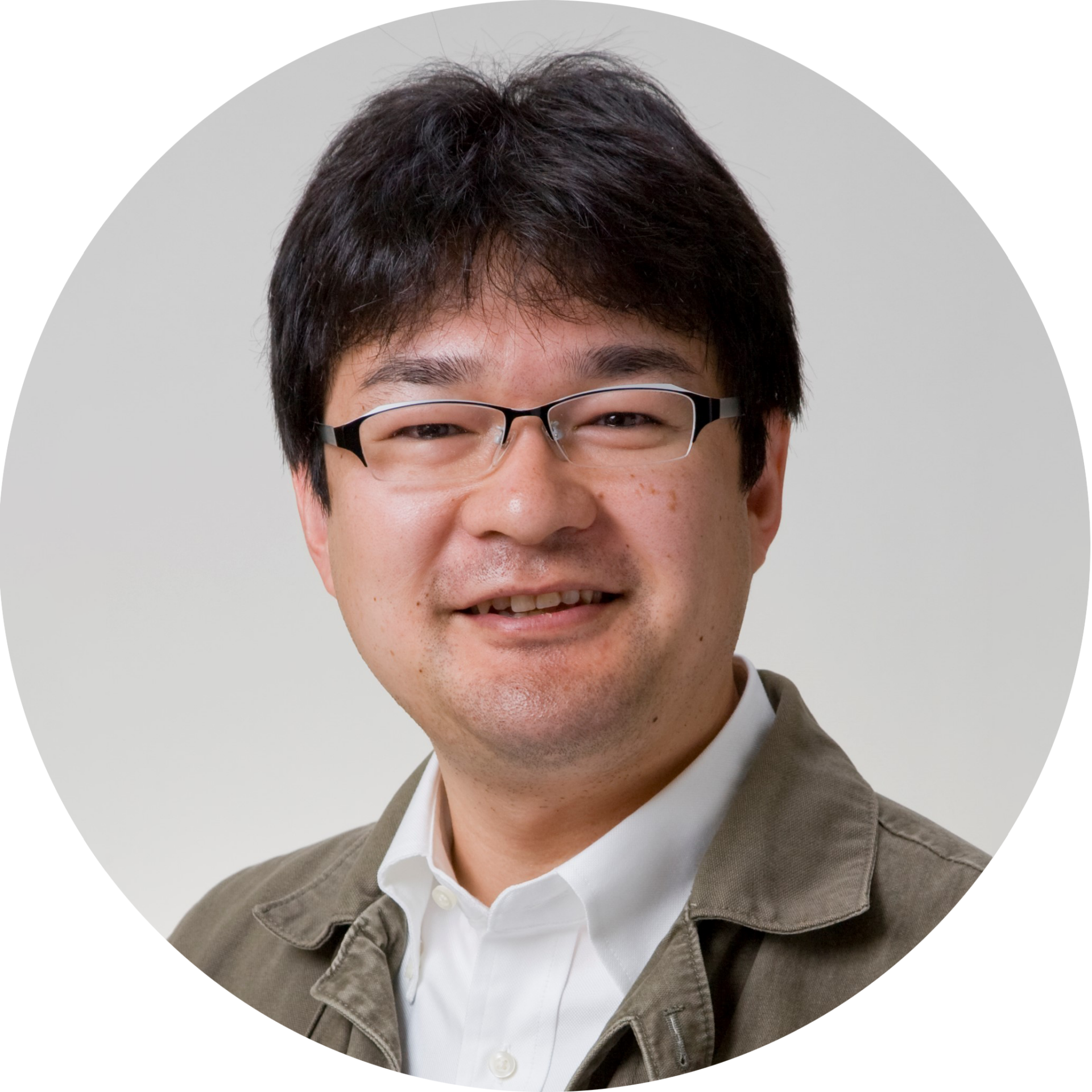
Takei Wataru, PhD
Kanazawa University
College of Human and Social Science, School of Teacher Education
Brief Bio
Dr. Takei Wataru received his PhD from the University of Tsukuba in 2004 and is currently a professor at Kanazawa University, College of Human and Social Science, School of Teacher Education. His research interests include the understanding of the sign language acquisition process of Deaf children, and he has found that manual babbling is observed in the sign language acquisition process. He has also been studying home signs created independently by non-schooled Deaf people who have no contact with the conventional sign language. In recent years, he has been developing sign language materials to help Deaf children acquire Japanese reading and writing skills by utilizing sign language, as well as assessment tools to evaluate Deaf children’s grammatical comprehension and vocabulary skills of Japanese Sign Language. He also provides consultation services to Deaf children and their parents/guardians whose hearing impairment is detected in newborn hearing screening tests by referring them to educational institutions for children with hearing impairment after providing them with the knowledge necessary to raise hearing-impaired and deaf children.
Presentation
In recent years, thanks to the widespread use of cochlear implants and improved performance of hearing aids, an increasing number of hearing-impaired children are able to use their residual hearing to learn to read and write Japanese. On the other hand, for hearing-impaired children who cannot fully utilize their residual hearing even with such hearing aids, sign language is indispensable for learning Japanese literacy. Even for hearing-impaired children who are able to use their residual hearing, learning Japanese Sign Language as a second language, acquiring both Japanese and Japanese Sign Language, and spreading their wings in society will lead to an improvement in the quality of life of hearing-impaired children. In this presentation, I will introduce the teaching materials that our group has created, which are translations of the first grade Japanese national textbook for elementary school children into Japanese Sign Language, and show examples of teaching Japanese reading and writing using sign language. In addition, in order to learn to read and write Japanese using Japanese Sign Language, a certain level of sign language proficiency is required. For this reason, I would like to introduce an assessment tool I have created to evaluate the sign language proficiency of children who are Deaf. If time permits, I would also like to discuss the progress of our group’s current research on a Japanese Sign Language learning curriculum for deaf children who are learning Japanese Sign Language as a second language.

